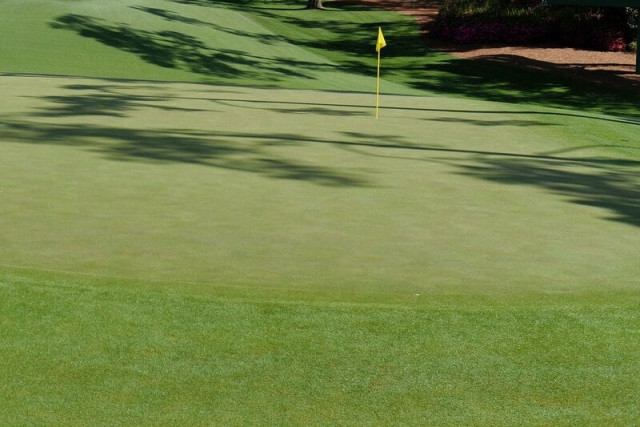Golf Course Brawl: Slow Play Leads to Frustration, and a Fight
A recent incident on a Florida golf course highlights the simmering tensions slow play can ignite, culminating in a physical altercation. The viral video capturing the brawl has sparked a renewed conversation about golf etiquette and the importance of pace of play. This isn't just about keeping the round moving; it's about maintaining the enjoyment and safety of everyone on the course.
The Incident: What Happened on the Green?
The altercation, which took place at the [Name of Golf Course, if known, otherwise omit], involved two groups of golfers. One group, reportedly significantly slower than the group behind them, triggered escalating frustration. Witnesses claim that verbal altercations began on the 17th hole, culminating in a physical fight on the 18th green. While details remain slightly murky, social media footage shows a heated exchange escalating into shoving and punches. Police were called to the scene, and reports indicate that [mention any known injuries or arrests, citing sources if possible].
The Fallout: A Viral Video and Heated Debate
The video of the incident quickly went viral, sparking widespread discussion across various social media platforms. Comment sections are awash with opinions, ranging from strong condemnation of the violence to sympathetic views for the frustrated group waiting behind. This highlights a crucial point: slow play is a significant source of conflict on golf courses.
Why Slow Play Causes Golf Course Brawls: A Deeper Dive
Slow play is a pervasive issue impacting the golfing experience. It's not simply a matter of etiquette; it undermines the flow of the game and can lead to significant delays for other players. Here are some contributing factors:
- Lack of Course Knowledge: Unfamiliarity with the course, including proper club selection and strategic planning, can significantly slow down play.
- Inadequate Preparation: Spending excessive time searching for clubs, lining up shots, or adjusting equipment wastes valuable time.
- Poor Course Management: Failure to keep up with the group ahead contributes to congestion.
- Lack of Awareness: Many golfers are unaware of the impact their pace has on others.
Beyond the Brawl: The Importance of Golf Etiquette
This incident underscores the importance of proper golf etiquette. Respect for fellow players is crucial for a positive and enjoyable golfing experience. Beyond pace of play, this includes:
- Repairing Divots and Ball Marks: Maintaining the course's condition is a shared responsibility.
- Raking Bunkers: Leaving bunkers in good condition for others to play from.
- Quiet During Other Players' Swings: Showing consideration and respect for concentration.
Preventing Future Incidents: Tips for Maintaining Pace of Play
To prevent similar incidents and ensure smooth gameplay, golfers should:
- Play Ready Golf: Be prepared to hit your shot when it's your turn.
- Know the Course: Familiarize yourself with the layout and strategy before teeing off.
- Keep Up with the Group Ahead: Maintain a reasonable distance from the group in front of you.
- Be Mindful of Your Pace: Be aware of your playing speed and make adjustments as needed.
- Consider Playing with Others of Similar Skill Levels: This can help to streamline play and avoid frustrating delays.
The Bottom Line: Respect and Responsibility on the Course
The golf course brawl serves as a stark reminder of the importance of respecting fellow golfers and maintaining a proper pace of play. While violence is never the answer, addressing slow play proactively is crucial to preserving the enjoyment and safety of this beloved sport. Let's all commit to a more considerate and efficient approach on the course.
Call to Action: Share your thoughts and experiences with slow play in the comments below. What are your tips for maintaining a good pace of play?
(Note: Remember to replace bracketed information with accurate details if available. Include relevant internal and external links to enhance SEO and provide further context. Consider adding relevant images or videos to enhance engagement.)
